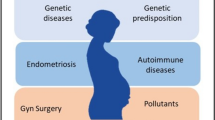
Overview
- Aims to provide balanced information including the limitations and risks associated with the technique? of oocyte cryopreservation
- Author has treated hundreds of women in one of the most prestigious fertility centres in the world
- Information in this book will be useful for both professionals and for women that are considering oocyte cryopreservation
Access this book
Tax calculation will be finalised at checkout
Other ways to access
About this book
Similar content being viewed by others
Keywords
Table of contents (13 chapters)
-
Front Matter
-
Back Matter
Editors and Affiliations
About the editor
Dominic Stoop took his medical degree in 2001 and completed his residency in obstetrics and gynaecology in 2007 at the Ghent University, Belgium. He joined the Centre for Reproductive Medicine of the Free University of Brussels in 2008 where he is currently a professor. He is a member of the European Society of Human Reproduction and Embryology board-certified subspecialist in reproductive medicine and surgery. His main clinical and research interests include gynaecology and ovary freezing.
Bibliographic Information
Book Title: Preventing Age Related Fertility Loss
Editors: Dominic Stoop
DOI: https://doi.org/10.1007/978-3-319-14857-1
Publisher: Springer Cham
eBook Packages: Medicine, Medicine (R0)
Copyright Information: Springer International Publishing Switzerland 2018
Hardcover ISBN: 978-3-319-14856-4Published: 23 November 2017
Softcover ISBN: 978-3-319-79205-7Published: 30 August 2018
eBook ISBN: 978-3-319-14857-1Published: 27 October 2017
Edition Number: 1
Number of Pages: VIII, 172
Number of Illustrations: 6 b/w illustrations, 15 illustrations in colour
Topics: Reproductive Medicine, Gynecology, Maternal and Child Health



